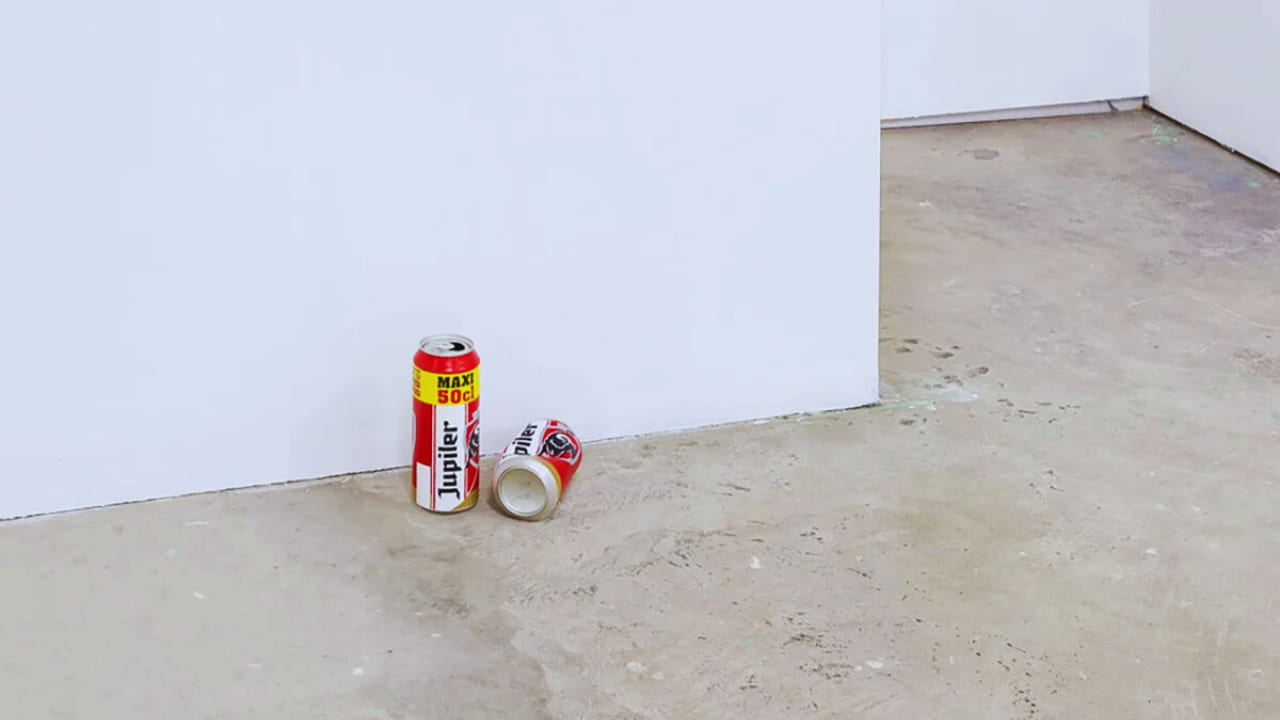In a case of art imitating life, a museum in the Netherlands found itself in an unexpected predicament after a conceptual artwork was mistaken for garbage and tossed in the trash.
The incident occurred at the LAM Museum in Lisse, approximately 30 kilometers southwest of Amsterdam. The museum, dedicated to showcasing food and consumption art, has displayed a work by French artist Alexandre Lavet titled “All the Good Times We Spent Together.”
At first glance, the piece appeared to be nothing more than a pair of discarded, dented beer cans – the kind one might expect to find haphazardly left behind by construction workers. But a closer inspection revealed the truth: the cans were “meticu, lousy hand-painted with acrylics, with each detail painstakingly replicated.”
The museum stated, “For the artist, the cans symbolize cherished memories shared with dear friends. While evenings spent enjoying drinks may seem trivial in the grand scheme of things, they ultimately embody precious moments of connection.”
The museum had strategically placed Lavet’s creation inside the glass shaft of an elevator, further enhancing the illusion that the beer cans had been accidentally left behind. It was all part of the museum’s mission to “display artworks in unexpected places” and encourage visitors to “see everyday objects in a new light.”
But that concept was lost on the museum’s elevator technician, who filled in for the regular staff member. Mistaking the artwork for actual trash, the well-meaning worker promptly discarded the cans, unaware of their actual artistic value.
“He was just doing his job in good faith,” said Sietske van Zanten, the museum’s director. “In a way, it’s a testament to the effectiveness of Alexandre Lavet’s art.”
Museum officials were, understandably, dismayed when they realized the artwork had vanished. But thanks to a thorough search, the beer cans were eventually recovered from a trash bag, which was still intact.
“Miraculously, both cans were found intact,” the museum reported. “They have been cleaned and temporarily put in a place of honor at the museum entrance, now displayed on a traditional plinth.”
Curator Elisah van den Bergh said the museum wanted to give the recovered artwork “their moment in the spotlight,” hinting that the cans may be relocated to another unexpected location.
“We enjoy surprising our visitors, so no space is off-limits,” van den Bergh declared.
This incident is a poignant reminder that the line between art and everyday objects can sometimes be thin. Numerous conceptual artworks have been inadvertently discarded or destroyed throughout history due to misunderstandings.
Just last year, a hunger visitor to a gallery in Seoul, South Korea, famously ate a banana that was part of Maurizio Cattelan’s famous “Comedian” artwork, which had sold for a staggering $120,000 at Art Basel Miami Beach.
In another case, a five-foot-tall cake sculpture by artist Pat Lasch from 1979 mysteriously vanished from the Museum of Modern Art in New York. The consensus was that it had been thrown out. As Lasch herself lamented, “It’s like losing my mother.”
Even the revered British artist Damien Hirst has been a victim of such mishaps. In 2001, a cleaner at a London gallery chucked out one of Hirst’s assemblage works, which included items like candy wrappers, newspapers, and—you guessed it—empty beer bottles.
The LAM Museum team found the accidental disposal of Lavet’s beer can artwork humbling. But rather than dwelling on the mistake, they embraced it, viewing it as a testament to the power of conceptual art to challenge perceptions and subvert expectations.
“Our art encourages visitors to see everyday objects in a new light,” van Zanten said. “By displaying artworks in unexpected places, we amplify this experience and keep visitors on their toes.”
With the cans safely recovered and on display, the museum is ready to continue its mission of surprising and delighting its audience. After all, in contemporary art, you never know what might be lurking in the trash.
